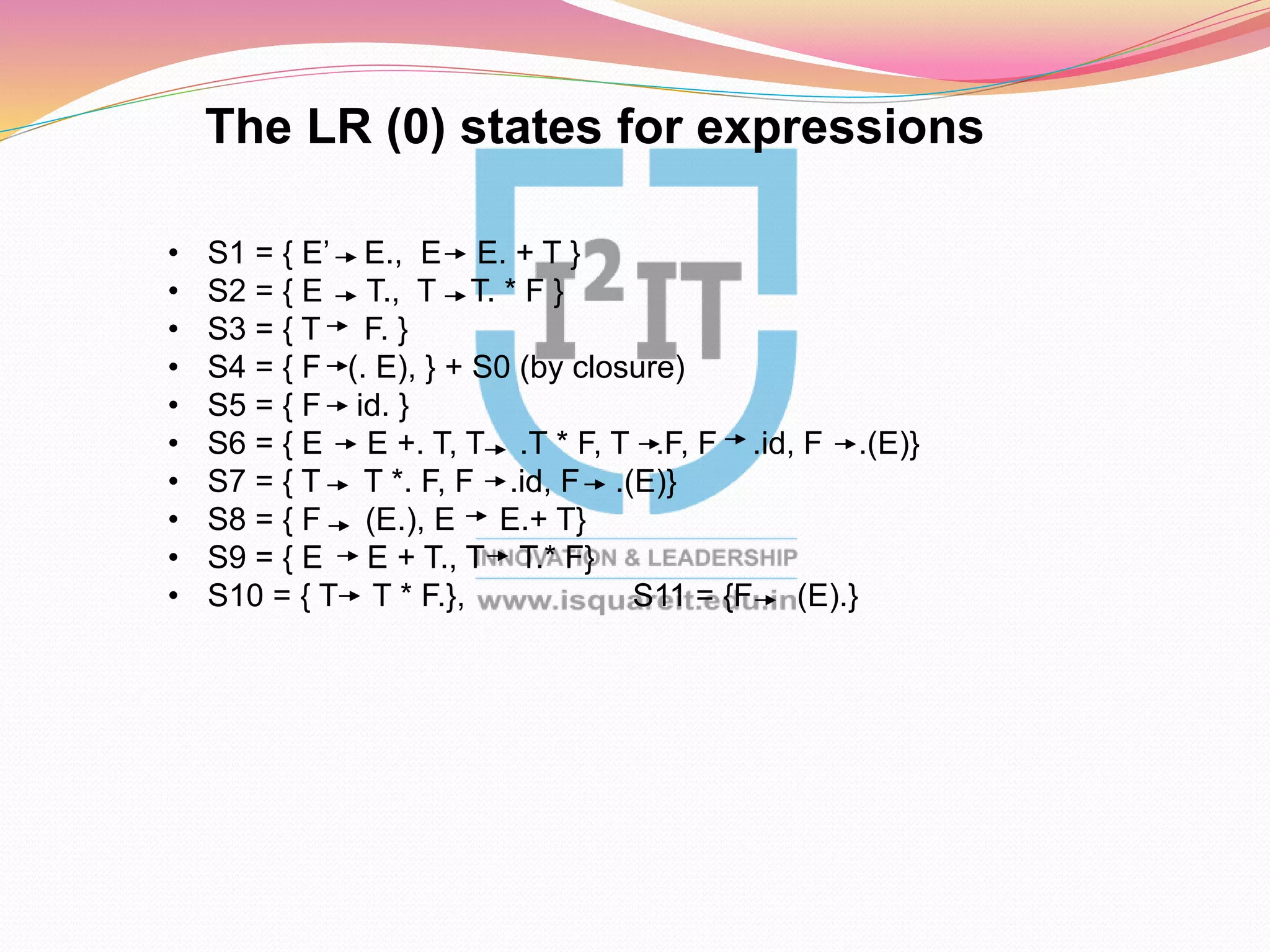1) LR(0) parsers use left-to-right, rightmost derivations with 0-token lookahead to parse context-free grammars deterministically.
2) The states of the LR(0) automaton are sets of parsing items that indicate the progress of recognizing productions.
3) Parsing tables are constructed from the automaton to specify the shift and reduce actions and state transitions based on the next input symbol.

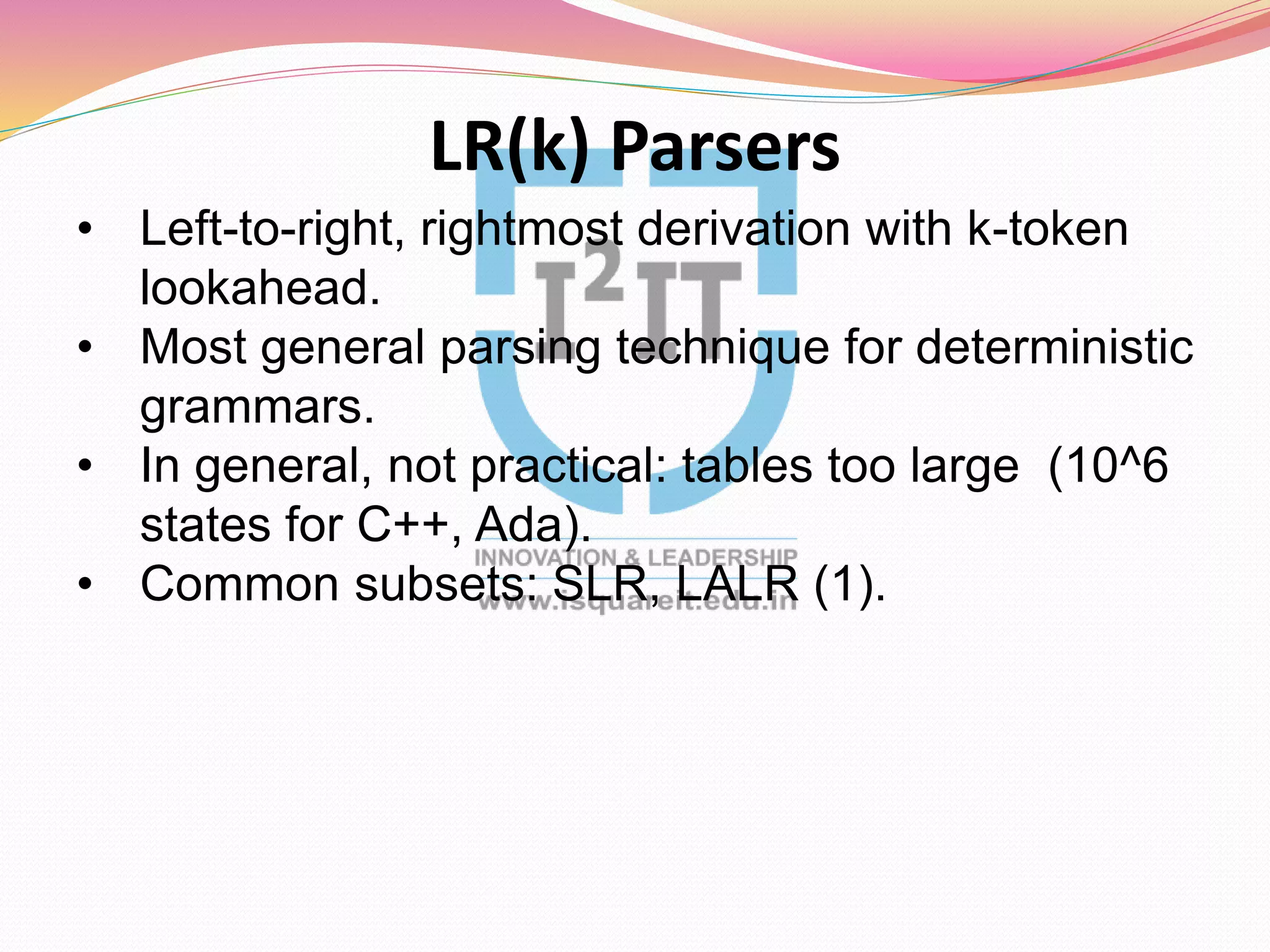
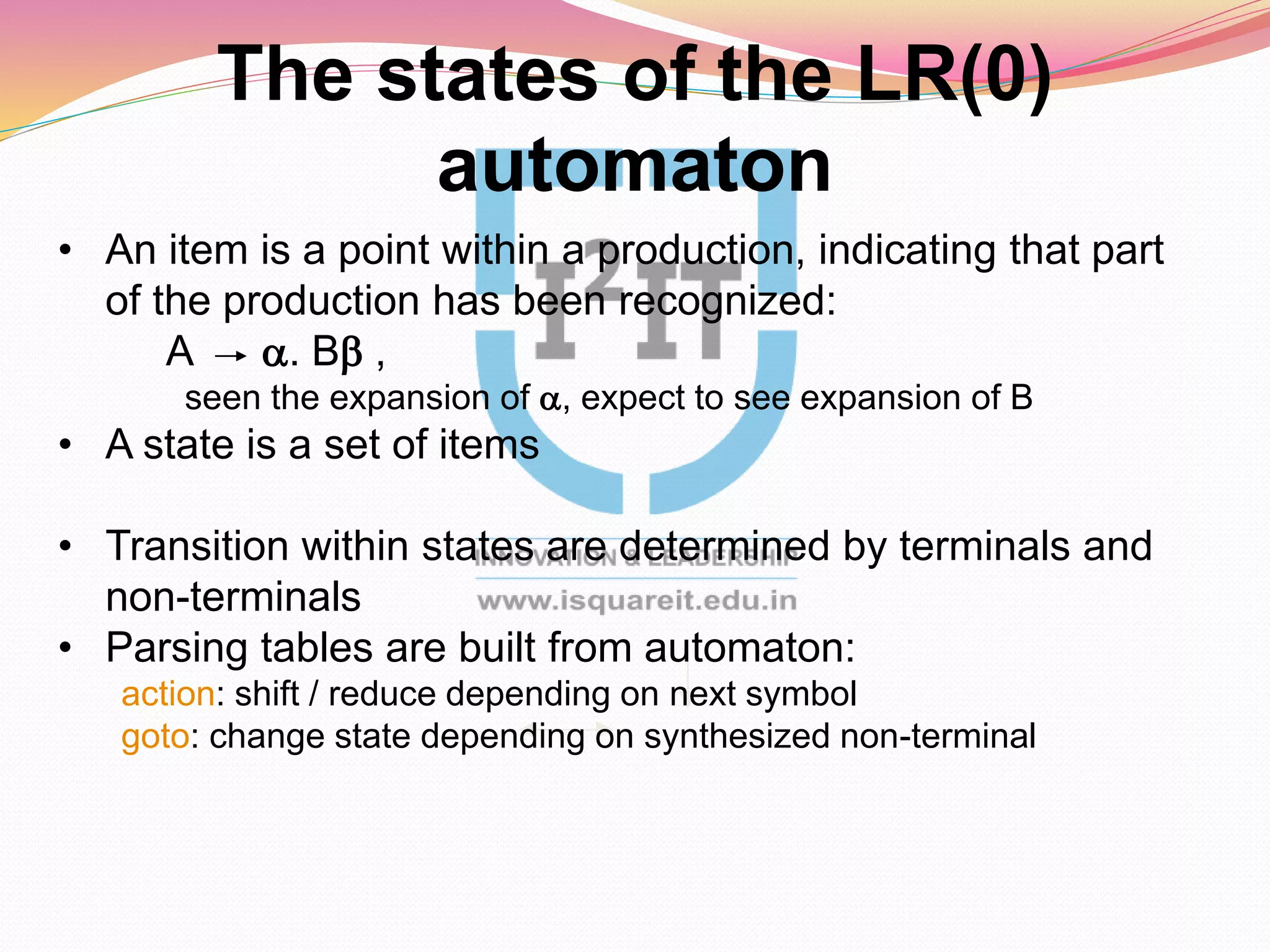
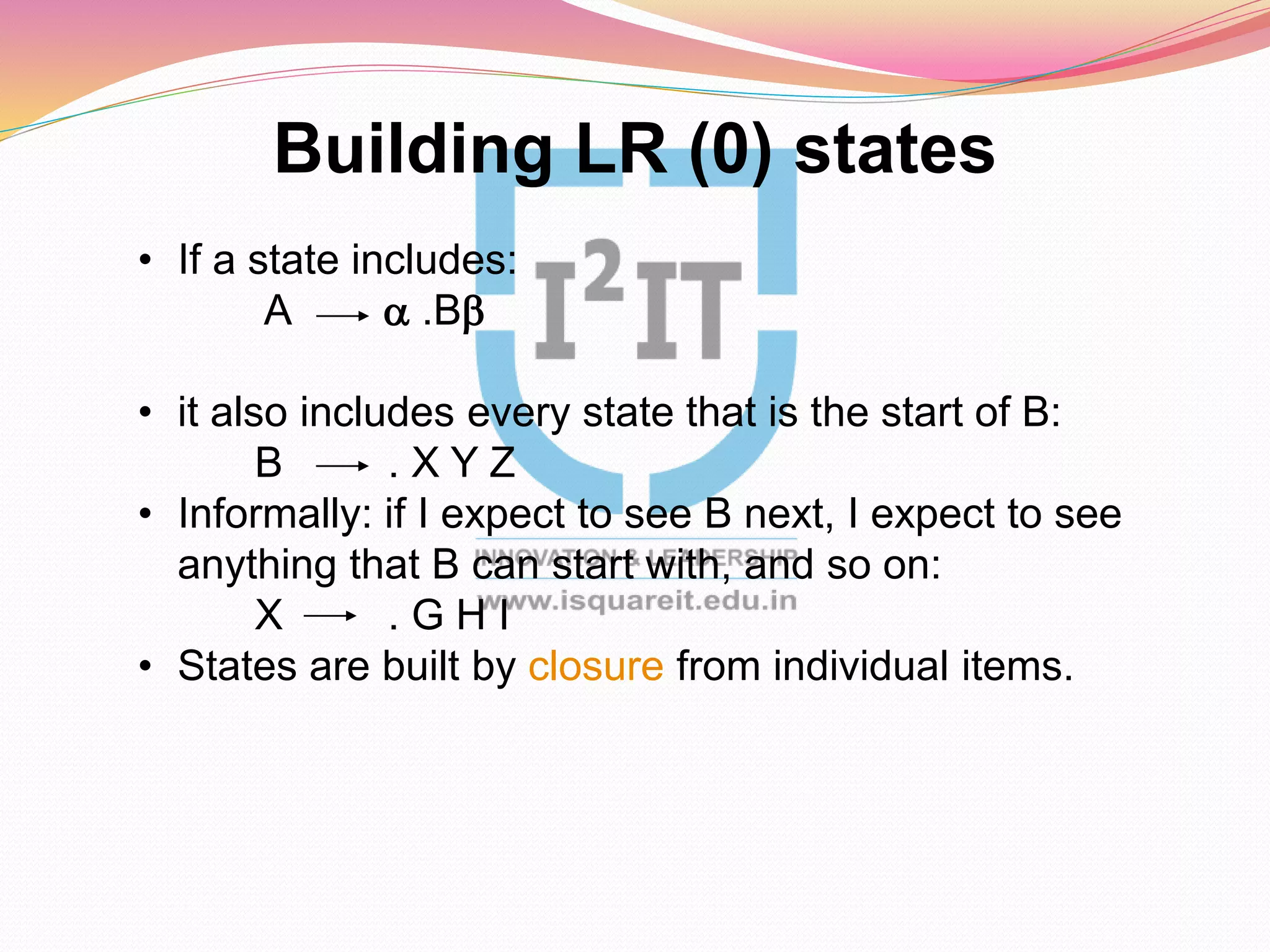
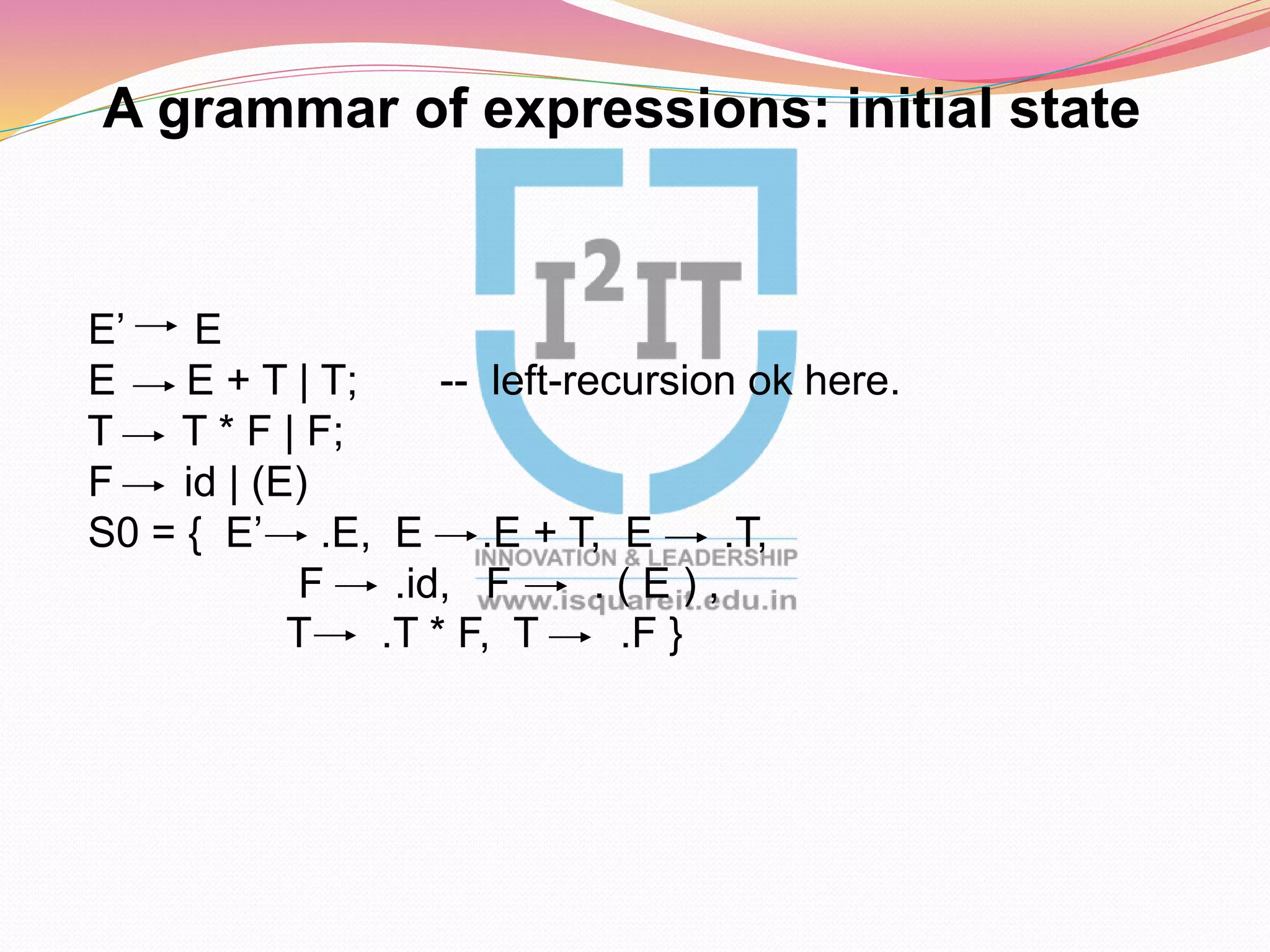
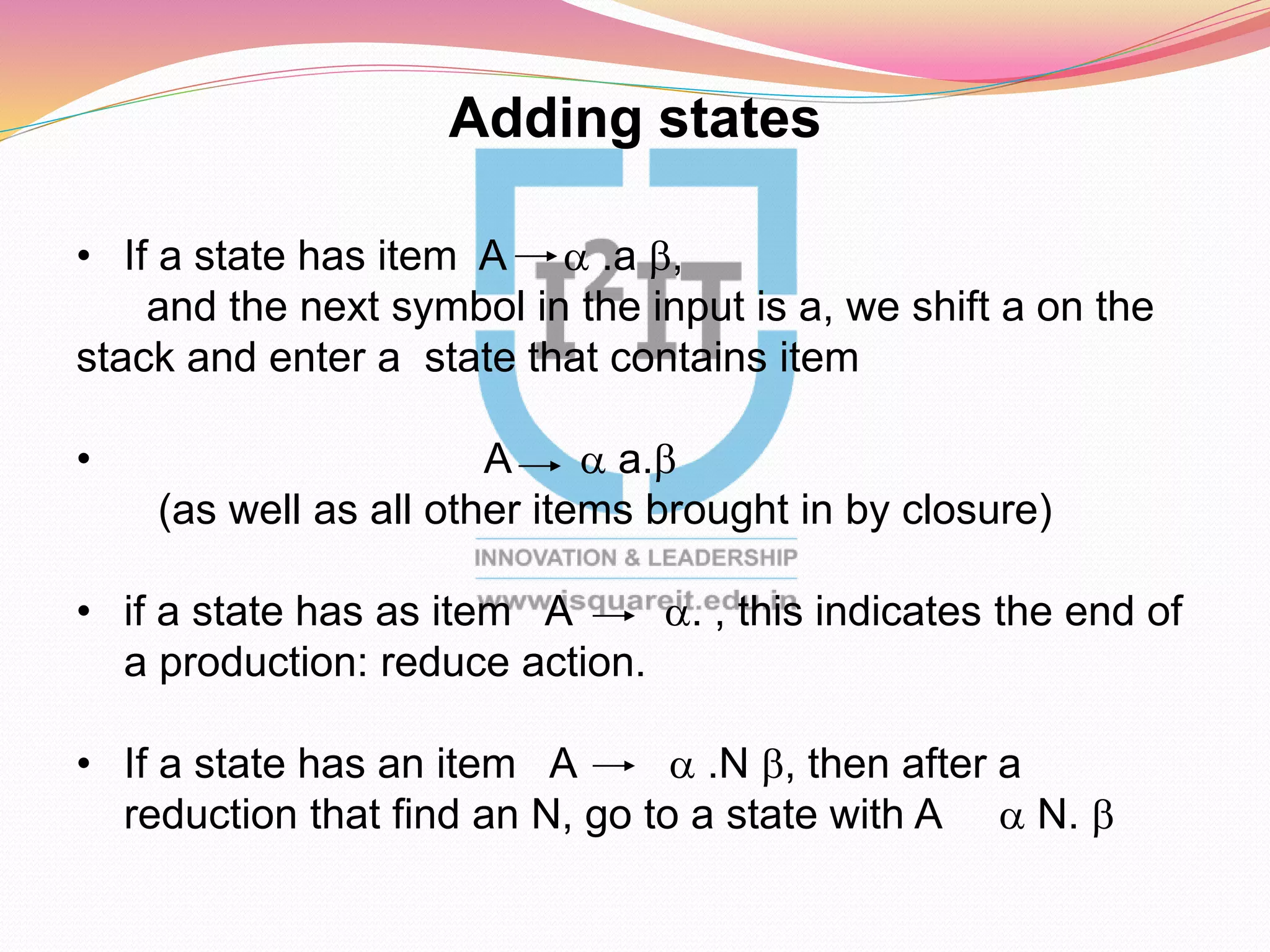
![Construction of a predictive parsing
table
• The following rules are used to construct the
predictive parsing table:
– 1. for each terminal a in FIRST(α),
add A → α to matrix M[A,a]
– 2. if λ is in FIRST(α), then
for each terminal b in FOLLOW(A),
add A → α to matrix M[A,b]](https://image.slidesharecdn.com/sameermlr0parser-200701133032/75/LR-0-PARSER-7-2048.jpg)
